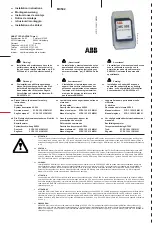
Table 2: Application path list
Addressed
Logical Unit
Device
Handle
Path
SAN
Port
Example Logical Unit
Worldwide Identifier
Tape drive 1
TAPE0
Active
1
Port A
50:01:10:a0:00:00:00:01
Standby
2
Port B
50:01:10:a0:00:00:00:01
Tape drive 2
TAPE1
Active
1
Port A
50:01:10:a0:00:00:00:03
Standby
2
Port B
50:01:10:a0:00:00:00:03
Library
controller
CHANGER0 Active
2
Port B
50:01:10:a0:00:00:00:02
Standby
1
Port A
50:01:10:a0:00:00:00:02
Passive
2
Port B
50:01:10:a0:00:00:00:02
Passive
1
Port A
50:01:10:a0:00:00:00:02
Windows driver theory of operation
The advanced path failover drivers support data path failover and control path failover on Hewlett
Packard Enterprise LTO-6 drives integrated into Hewlett Packard Enterprise tape libraries.
A failover device driver must identify devices accessible over the different paths available and associate
paths with devices so that it is able to mask duplicate paths and present a single path to an ISV
application.
As devices are discovered by the operating system and the
DEVICE OBJECT
is passed into the driver for
initialization, the driver determines if the device is a tape or changer device and is a candidate for failover.
If the device is a candidate for failover, the driver determines the serial number (SN) or worldwide name
(WWN) of the device.
If the device is capable of advanced path failover, the driver determines whether failover is enabled for
the device. If the device does support failover and failover is enabled, then the driver will mask all
duplicate paths and present a single path to application clients. If the device does not support failover, if
failover is not enabled, or if an error occurred while attempting to determine the failover-enabled state,
then the driver will not modify the presentation of paths to the device to applications.
Driver components
Windows advanced path failover drivers consists of two drivers: a storage bus filter driver and an
intermediate class driver. The storage bus filter driver processes OS device notifications (PnP
notifications) to identify available paths to tape and media changer devices capable of supporting
advanced path failover. The intermediate class driver works with the devices that have been identified as
advanced path failover capable devices and manages the active paths to the changer and tape drives.
This architecture follows the architecture of Microsoft’s MPIO. MPIO only supports disk devices and
cannot be used directly.
Figure 13: Driver and system organization
on page 47 shows the organization of the Windows
drivers and the system components when an Emulex LPe12002 host bus adapter is installed. In this
example, the tape drive presents both SSC (tape) and SMC (media changer) device servers. Not all
drives in the library will present an SMC device server.
46
Windows driver theory of operation
















































